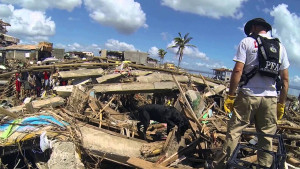
No one can predict when the next earthquake will strike. But according to Bob Yeats, a retired geology professor at Oregon State University, a knowledge of geology can help us predict where. San Francisco, Los Angeles, Seattle, Portland, Vancouver. Like the recent seismic disaster sites in Japan and Ecuador, these West Coast cities all have one thing in common: they are earthquake time bombs. On this episode of Locus Focus we talk with Professor Yeats, whose new book, Earthquake Time Bombs, reveals the world’s most dangerous earthquake hotspots, the communities at risk, and how we can mitigate the effects of future disasters.
Robert Yeats, an emeritus Oregon State University geologist, was one of the first scientists to point to the possibility of a major earthquake in the Pacific Northwest. Five years ago, Yeats was interviewed by Scientific American on earthquake hazards and outlined the dual threats to Port au Prince, Haiti, of poverty and proximity to a major fault line. One week later, that time bomb went off and more than 100,000 people died in a catastrophic earthquake. When the Scientific American reporter called Yeats after that seismic disaster to ask if he had predicted the quake, he said no.
“I could say where the time bombs are located – large, rapidly growing cities next to a tectonic plate boundary with a past history of earthquakes, but I had no way of knowing that the bomb would go off a week after my interview,” he said.
- KBOO


